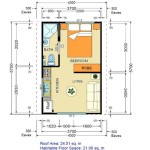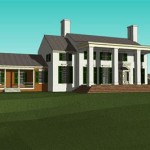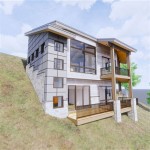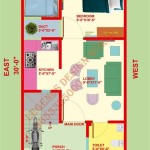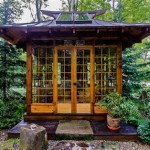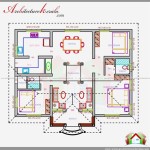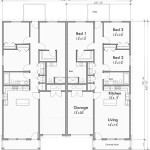Alternative House Plans: Exploring Non-Traditional Home Designs
The traditional single-family home, while a staple of residential architecture, doesn't always meet the needs or desires of modern homeowners. Alternative house plans offer a departure from the conventional, providing unique layouts, incorporating sustainable features, and catering to diverse lifestyles and budgets. This article explores the world of alternative house plans, highlighting key categories and their benefits.
Tiny Homes
Tiny homes represent a minimalist approach to living, emphasizing efficient use of space and reduced environmental impact. These compact dwellings typically range from 100 to 400 square feet and often incorporate clever design elements to maximize functionality. Tiny homes offer affordability, mobility, and simplified living.
Modular and Prefabricated Homes
Modular and prefabricated homes are constructed off-site in controlled factory environments and then transported to the final location for assembly. This construction method often results in faster build times, reduced costs, and higher quality control compared to traditional site-built homes. Modular homes adhere to local building codes and can be customized to meet individual needs.
Container Homes
Repurposing shipping containers into homes has become an increasingly popular alternative housing option. Container homes offer durability, affordability, and a unique industrial aesthetic. They can be modified and combined to create various layouts and sizes, offering flexibility in design.
Earth-Sheltered Homes
Also known as earthships or underground homes, these structures are partially or fully embedded into the earth. Earth-sheltered homes offer excellent insulation, reducing energy consumption for heating and cooling. They also provide natural soundproofing and protection from extreme weather conditions.
A-Frame Homes
Characterized by their steeply angled roofs that extend to the ground, A-frame homes offer a distinctive architectural style. The high ceilings create a sense of spaciousness, while the compact footprint minimizes the home's environmental impact. A-frames are often favored for vacation homes or cabins due to their unique charm and efficient use of space.
Barndominiums
Combining the rustic charm of a barn with the comforts of a modern home, barndominiums offer a unique blend of style and functionality. These structures often feature open floor plans, high ceilings, and exposed beams, providing a sense of spaciousness and character. Barndominiums can be adapted to suit various needs, from residential living to workshops and hobby spaces.
Cob Houses
Cob houses are built using a mixture of earth, sand, straw, and water, creating a natural and sustainable building material. These homes offer excellent thermal mass, regulating indoor temperatures and reducing energy consumption. Cob construction allows for organic shapes and designs, providing a unique and artistic aesthetic.
Dome Homes
Dome homes are characterized by their spherical or partial-spherical shape, offering aerodynamic advantages and structural strength. These homes are often energy-efficient due to their reduced surface area and natural air circulation. Dome homes can be constructed from various materials, including wood, concrete, and metal.
Factors to Consider When Choosing an Alternative House Plan
Choosing an alternative house plan requires careful consideration of several key factors.
Budget
Alternative house plans can range significantly in cost, from the affordability of tiny homes to the potentially higher expenses of custom-designed earth-sheltered homes. Establishing a clear budget is crucial in narrowing down options.
Lifestyle
Consider how the chosen house plan aligns with individual lifestyle needs. A tiny home might be ideal for a minimalist lifestyle, while a barndominium might better suit a hobbyist or someone requiring a large workshop space.
Location and Climate
The local climate and site conditions play a crucial role in the suitability of certain alternative house plans. Earth-sheltered homes excel in extreme climates, while dome homes offer wind resistance in coastal areas.
Building Codes and Regulations
Research local building codes and regulations to ensure the chosen alternative house plan complies with local requirements. Some alternative house plans may require special permits or approvals.
Maintenance Requirements
Different alternative house plans have varying maintenance requirements. Consider the long-term maintenance needs and associated costs when making a decision.
By carefully considering these factors, individuals can choose an alternative house plan that meets their specific needs, preferences, and budget, while also embracing innovative design and sustainable living.

Garbage House Floorplans Building An Alternative Home Floor Plans Container A

Scarborough Alternative House Floor Plans

18 Beautiful Earthbag House Plans For A Budget Friendly Alternative Housing Cob Round

Design For A House Of Five Bays Alternative Principal Floor Plan Basement And Bedroom Plans Entrance Elevation Riba Pix

Tiny House Alternative 90012pd Architectural Designs Plans

18 Beautiful Earthbag House Plans For A Budget Friendly Alternative Housing Cob Round

Alternative Configurations 6503rf Architectural Designs House Plans
10 Cob House Plans Get The Best For Your Building Renewable

Modern House Plan With Kitchen Island And Open Floor Concept Unfinished Basement 9532

Two Floor Round Home With Garage Alternative Homes Plans Dome House
Related Posts

